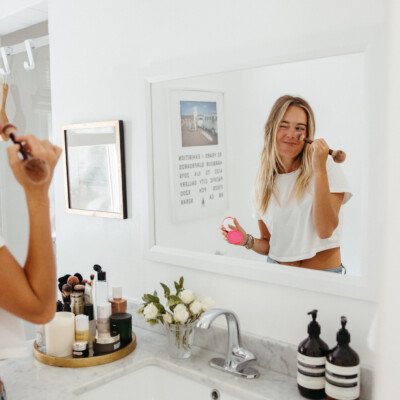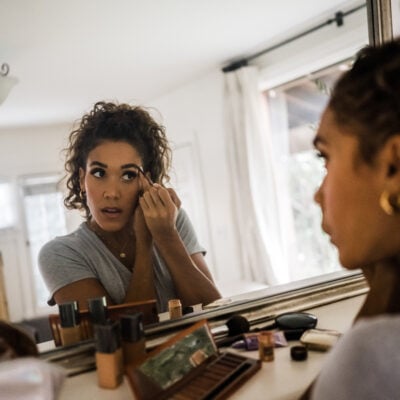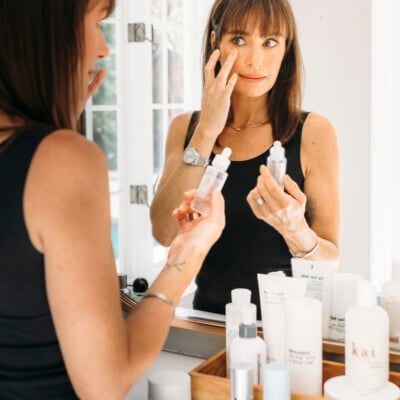As much as I love the experience that a salon manicure delivers (20 minutes where someone massages my hands and I can’t touch my phone? yes please), it’s just never become a regular part of my routine.
Whether you’re trying to save money, save time or limit your outings, the option to give yourself a quality manicure at home is not a bad one, especially when it’s so easy to master a DIY manicure. Yes, really!
I work hard to avoid toxins in my day-to-day life and nail polish is no exception. While you technically can’t find a completely toxin-free polish, there are so many high quality products out there that avoid the big ones.
We tapped the experts at LACQUER (they have the perfect at-home manicure kits!) for tips on helping our nails look like they got a fresh out of the salon. Carla Hatler, LACQUER owner & founder, shared some of her tricks and favorite products for a manicure that’s low on toxins, high on quality and actually lasts.
feature image: j.hannah
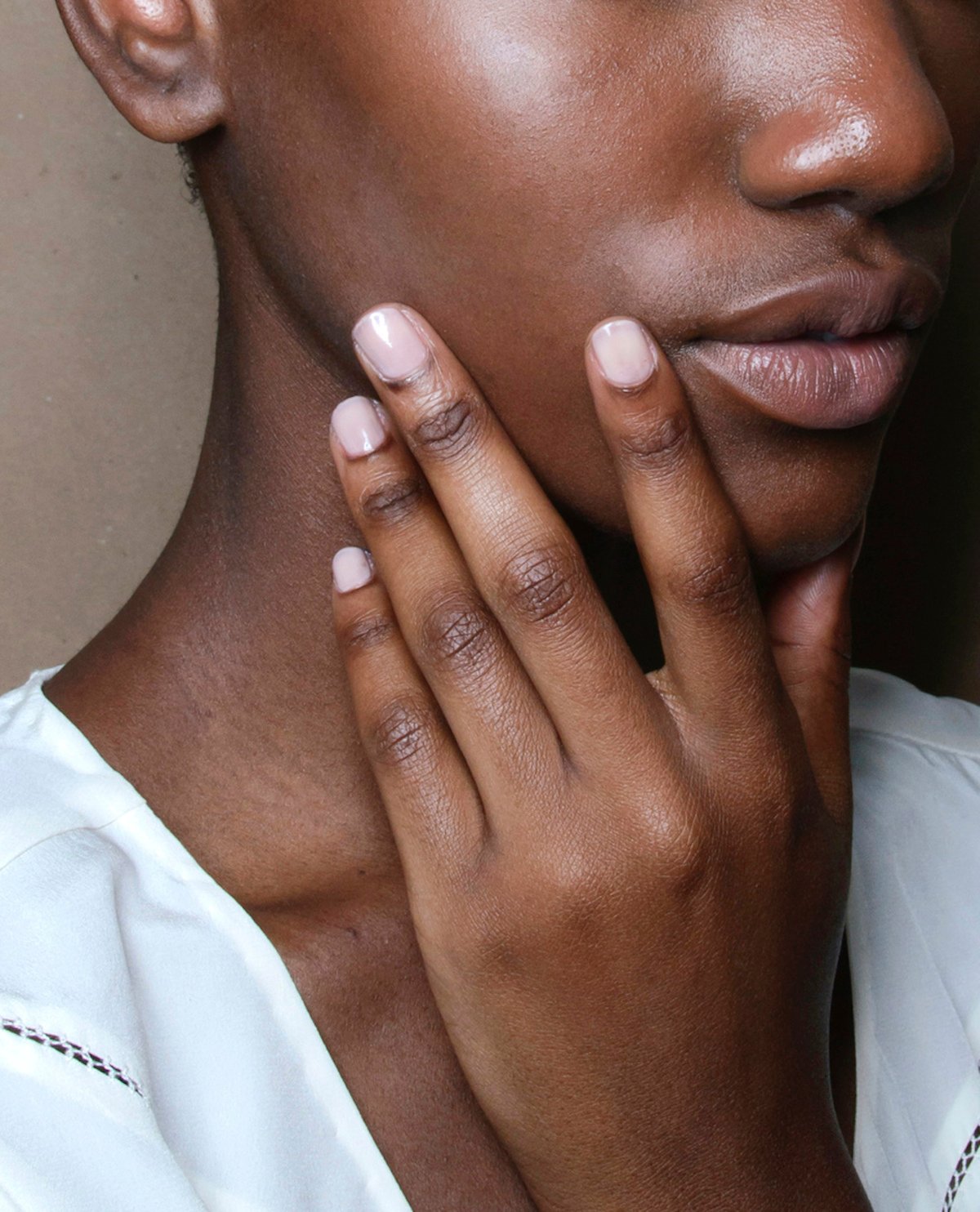 image: imaxtree
image: imaxtree
Prepping Your Nails for the Perfect Manicure:
- Get a paper towel and create a workspace for yourself. Set out all items and grab a nail clipper if you need it.
- Remove any polish on your nails.
- After trimming your nails, use the “softer” side of your nail file to gently file the end of your nail going in one direction only (do not “saw” back and forth – this tears the nail and can cause peeling) until you’ve achieved your desired shape
- Get a washcloth and run it under hot water (as hot as you can stand), squeeze out excess water and set to the side.
- Take dropper with cuticle softener and apply to one hand. Wrap hand in your hot towel and let sit until the towel starts to cool (do not let towel get cold).
- Use birchwood stick as a pusher to gently push the cuticle from the nail plate.
- Put a tiny bit of cuticle oil on each nail and cuticle area and take your mini buffer and gently “buff” any hanging dead skin away.
- Wash hands and repeat steps on the opposite hand.
- When finished, add more cuticle oil and rub into the nail bed and surrounding skin.
- Watch a step-by-step video here.
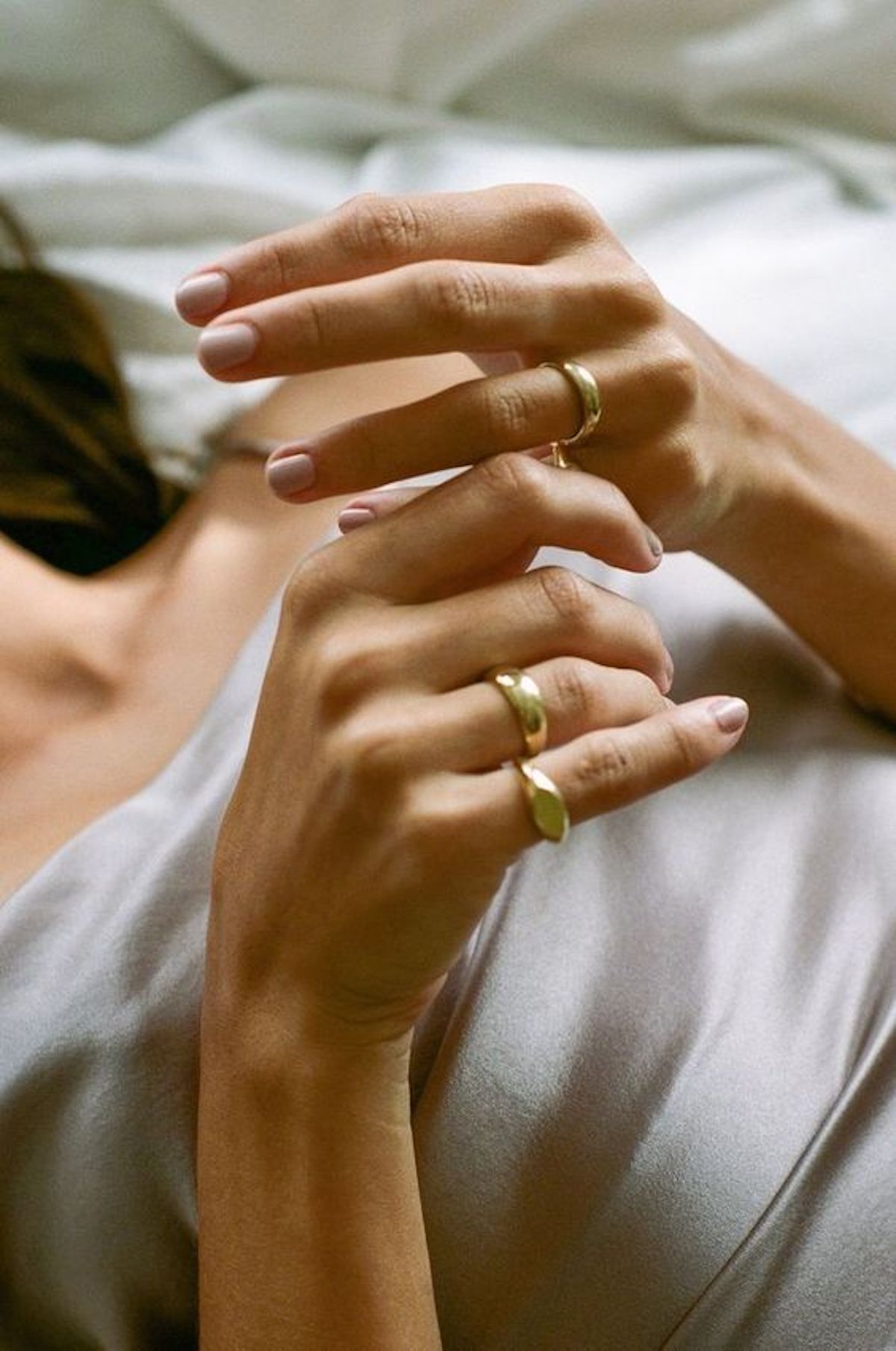 image: j.hannah
image: j.hannah
Applying Polish Like a Pro:
- Grab a cotton pad and swipe a layer of nail polish remover over nail bed to clean and oil on the nails off.
- Get painting! Apply your basecoat then follow it with two very thin coats of polish. Once you’ve added two coats of polish, immediately go over it with a top coat. Pro tip: unscrew all bottles to make sure you don’t ruin your nails during the painting process.
- We like to use the three stroke approach, where you start in the middle of the nail with one stroke and then complete with a stroke on each side of the nail plate. And the BIG secret to making sure your manicure lasts is capping the free edge. The free edge is the end of your nail plate and when you “cap” it with polish, you create a better seal so it’s more difficult to chip or crack. We created a video for that too! You can check it out here.
- Use a pointed cutip or brush and a bit of polish remover poured into the cap to clean up any mistakes.
- To be extra careful, act like your nails are wet for the rest of the day, and be extra careful for the next hour or two after painting them!
 image: madewell
image: madewell
Tricks of the Trade
How long should you let polish dry?
“This depends on the type of polish you are using – hybrid nail polishes like Vinylux or Essie Gel Couture dry pretty quickly, but our favorite is Dazzle Dry. It is a patented formula so it’s not like any other polish out there – it dries completely in 5 minutes to the touch. You can even put shoes & socks on after!”
Any products you love for an at-home manicure?
“We are obsessed with organic Dadi’ Lotion and Dadi’ Oil – especially since we are going longer with bare nails. Their special blend of organic oils are so nourishing and have been helping us keep our nails healthy and strong. Regular use of cuticle oil helps your mani last longer too. And we are even more obsessed with MAXUS nail strengthener 2.0 and their new JOJOBELIEVE IT BUTTER, which is like a nail balm for really intense nail restoration and hydration. We work directly with the founders of both companies & can attest to their focus on quality ingredients and safety. We are also partial to our at home manicure kits! They make at home nail care super easy & we included written instructions with the kit so you aren’t left guessing what to do (we also include a mini Dadi’ oil cuticle oil in our kit!).”
Why choose cleaner / ethical polishes?
“There are conflicting studies about nail polish ingredients and their safety (depending on who you talk to). Many chemicals found in nail products have been linked with hormone distruption among other health issues, which has led to a ton of pressure from consumers demanding safer beauty products. We like to err on the side of caution and recommend that you choose cleaner beauty products all around for nails, hair and skin.”
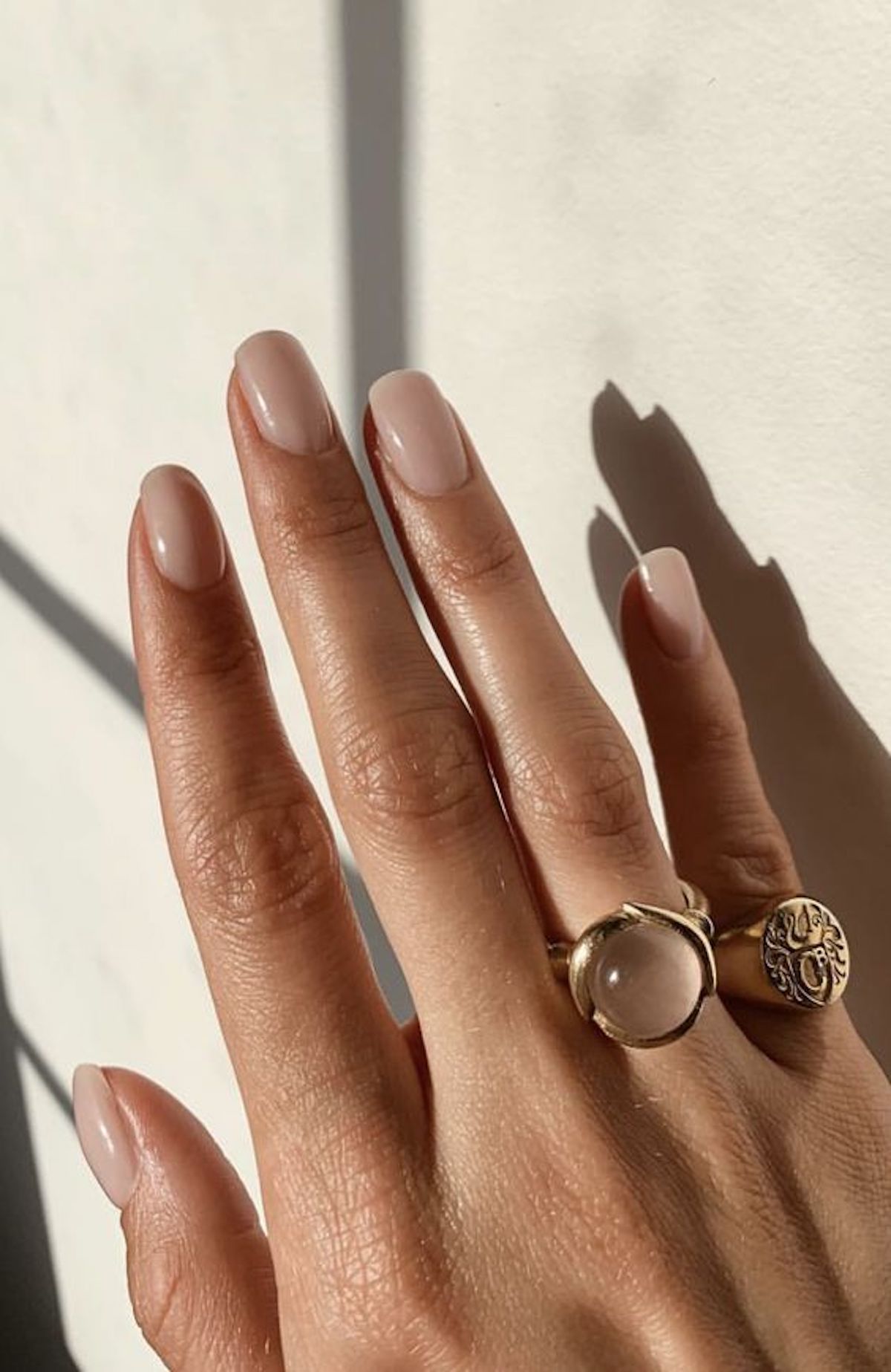 image: sheerlux
image: sheerlux
If you do want to go into a salon for your nail maintenance, what are some things to look for as far as safety / making a better nail experience?
“I’d say the two most important things to look for in regards to safety are how the tools are packaged & avoidance of any whirlpool foot baths.
- So many salons want you to think their tools are clean, so they’ve started putting them in pouches. These are sterilization pouches and they have indicator dots that turn brown or black when they have reached the proper sterilization temperature. If the dots are still blue – they’re just making you think they’ve been sterilized. You need a real autoclave to properly sterilize manicure tools and they are pricey (in the thousands). If your manicure costs less than $1/minute, it’s unlikely the salon you are going to has invested in equipment like that.
- Speaking of, whirlpool baths are another thing to try to avoid – water harbors bacteria and any time you have the opportunity for a nick or an abrasion that creates an opening in the skin, you open up possibilities for all types of infections. It’s safest to stay away from those whirlpool baths and look for places that have no jets, and preferably use disposable liners. We prefer waterless or soakless pedicures that use hot towels instead – there is no chance for cross-contamination with that method.”


